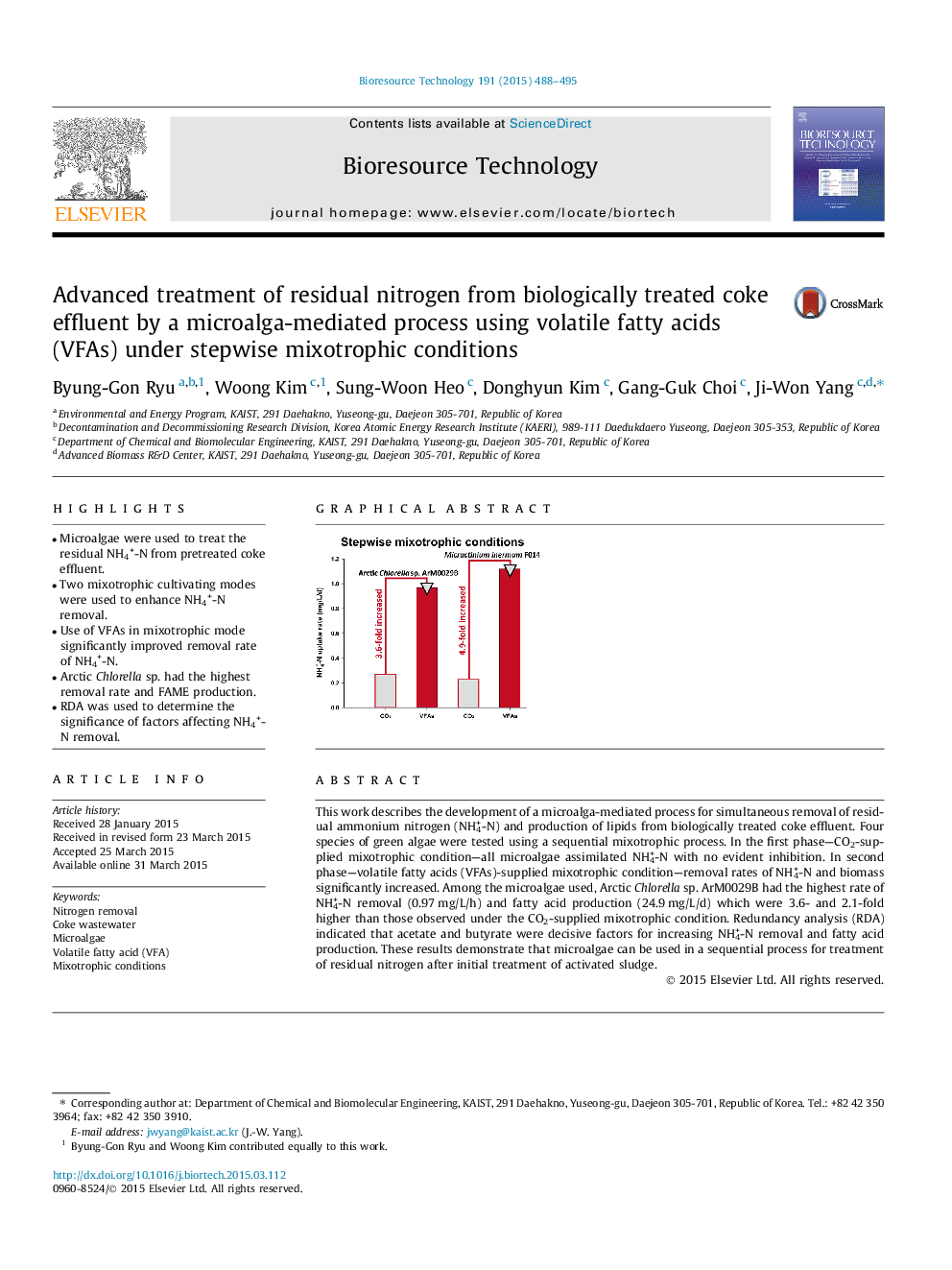| کد مقاله | کد نشریه | سال انتشار | مقاله انگلیسی | نسخه تمام متن |
|---|---|---|---|---|
| 679562 | 1459952 | 2015 | 8 صفحه PDF | دانلود رایگان |

• Microalgae were used to treat the residual NH4+-N from pretreated coke effluent.
• Two mixotrophic cultivating modes were used to enhance NH4+-N removal.
• Use of VFAs in mixotrophic mode significantly improved removal rate of NH4+-N.
• Arctic Chlorella sp. had the highest removal rate and FAME production.
• RDA was used to determine the significance of factors affecting NH4+-N removal.
This work describes the development of a microalga-mediated process for simultaneous removal of residual ammonium nitrogen (NH4+-N) and production of lipids from biologically treated coke effluent. Four species of green algae were tested using a sequential mixotrophic process. In the first phase—CO2-supplied mixotrophic condition—all microalgae assimilated NH4+-N with no evident inhibition. In second phase—volatile fatty acids (VFAs)-supplied mixotrophic condition—removal rates of NH4+-N and biomass significantly increased. Among the microalgae used, Arctic Chlorella sp. ArM0029B had the highest rate of NH4+-N removal (0.97 mg/L/h) and fatty acid production (24.9 mg/L/d) which were 3.6- and 2.1-fold higher than those observed under the CO2-supplied mixotrophic condition. Redundancy analysis (RDA) indicated that acetate and butyrate were decisive factors for increasing NH4+-N removal and fatty acid production. These results demonstrate that microalgae can be used in a sequential process for treatment of residual nitrogen after initial treatment of activated sludge.
Figure optionsDownload as PowerPoint slide
Journal: Bioresource Technology - Volume 191, September 2015, Pages 488–495